A yoga sequence to fire up your brain and body
The right hemisphere of the brain is proven to be the seat of imagination, curiosity and creativity. Scientists know a handful of ways we can stimulate this region ourselves, and yoga implements most all of them! Photos by Zak Neumann / YogaIowa
Yoga forces you to simulate the postures on both sides of the body, and for right-handed people, that means utilizing the left side more than we do on a daily basis and triggering right brain awakening. Auditory output like om-ing also fires this region. Furthermore, the Livestrong Foundation recommends yoga practices such as meditation and breath work, as relaxation is tied to receptivity in this area of the brain. Finally, experimenting with new variations of yoga poses can get your creativity oozing, so I’ve created a sequence that warms you up for a new twist on an old pose.
To begin, I recommend a good Child’s Pose to establish breath work and intention. Follow with a few nice, slow Sun Salutations to prepare your body. As you follow this sequence, let your intuition guide you, filling in with any transitions, movements or additional postures that your body calls for. After all, this is the time to get creative!
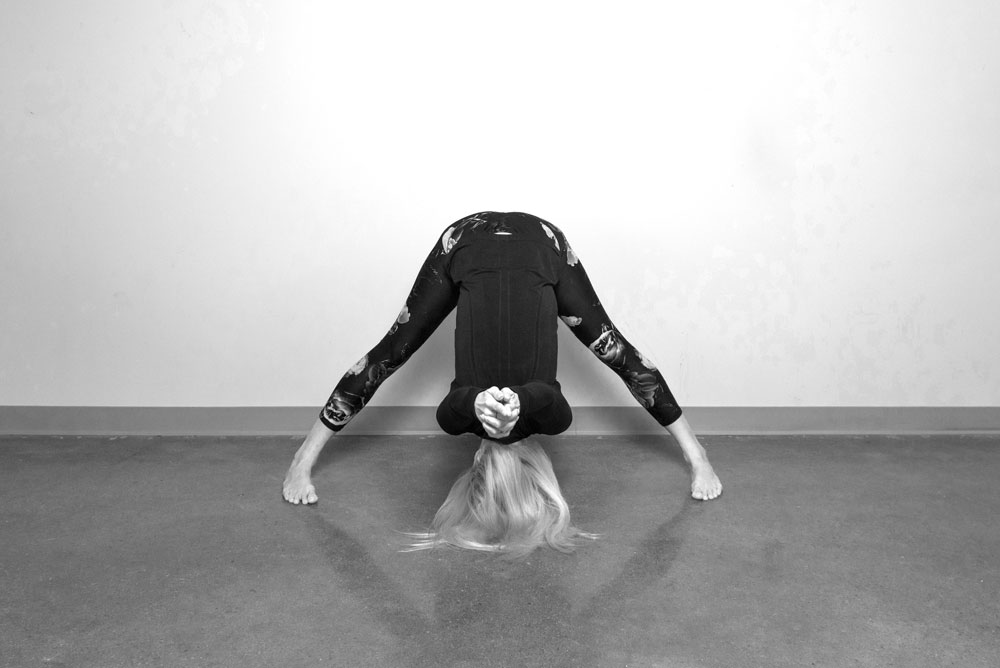
Prasarita Padottanasana (Bound Wide-Legged Standing Forward Fold)
Don’t hesitate to take up space as you widen your feet and slightly pigeon-toe in. Keep a suppleness in your knees to protect your hamstrings and lower back. Now interlace your hands at your sacrum or use a strap to bind. Let your shoulders open as gravity pulls your bind downward. This pose soothes your parasympathetic nervous system, allowing for relaxation and receptivity in the right brain while you stretch. Hold for 10 slow breaths.
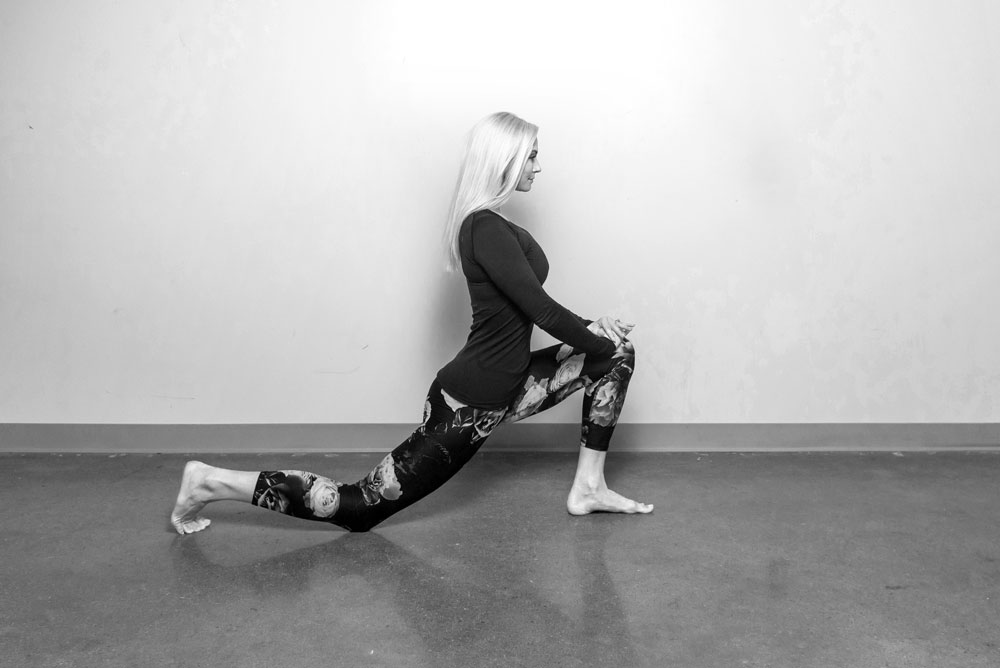
Anjaneyasana (Crescent Moon Pose)
Grounded through your back knee, isometrically pull it toward your front foot until you feel a nice stretch through your back quadriceps and iliopsoas. To deepen the stretch, press your pelvic bowl forward and up slightly. Release your shoulders away from your ears. Take five breaths on each side, deepening if needed with each breath out.
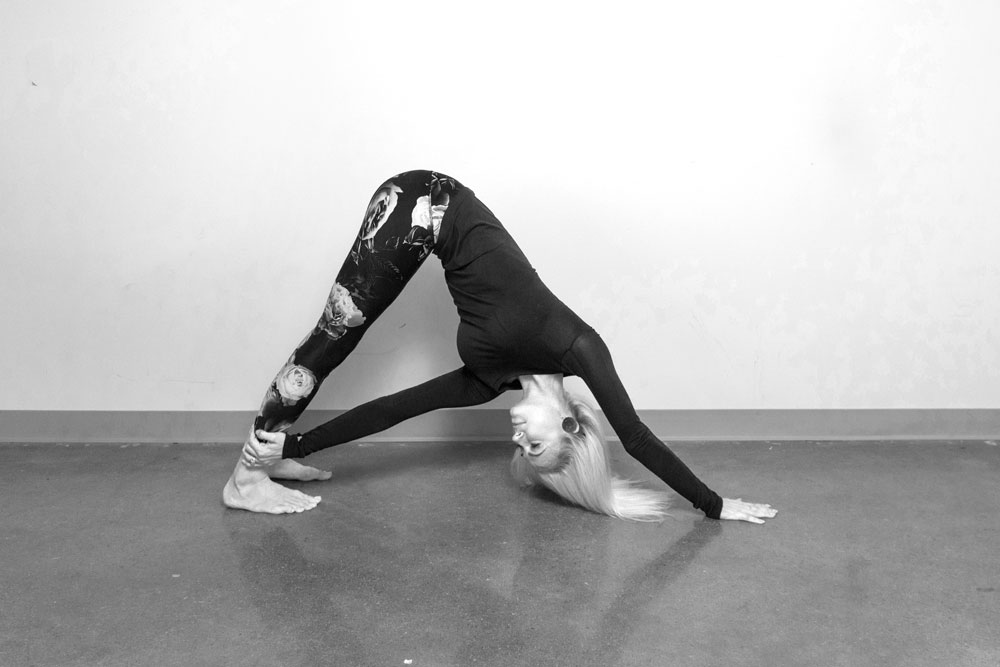
Parivrtta Adho Mukha Svanasana (Downward-Facing Dog with a twist)
Begin in Down Dog with feet hip-distance apart. Take your left hand to your right thigh, shin or ankle and pull your chest and gaze through for a twist to the right side. Relax your heels and keep your hips shooting upward. After five breaths, repeat on the other side.
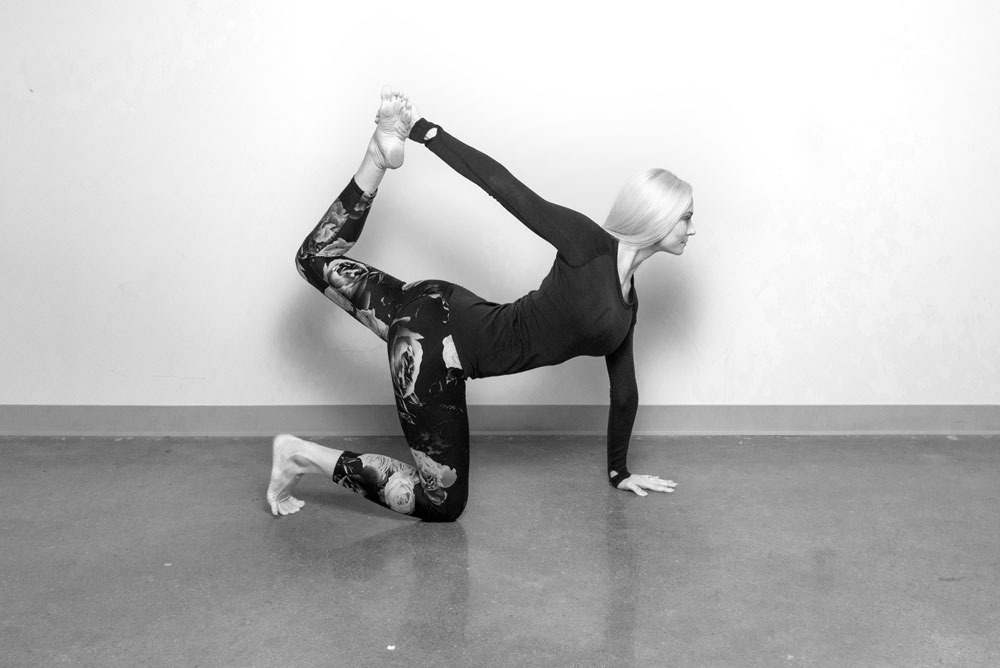
Vyaghrasana (Tiger Pose)
Form Table Pose with impeccable alignment of wrists under shoulders and knees beneath hips. Tether your belly up and in for support before reaching your right hand around to capture your left foot. A strap is a great option for this bind if needed. As you kick into your hand, be mindful of not inviting pain into your low back. Allow time for five breaths on each side as you stretch your chest and open your heart. Cont. on next page >
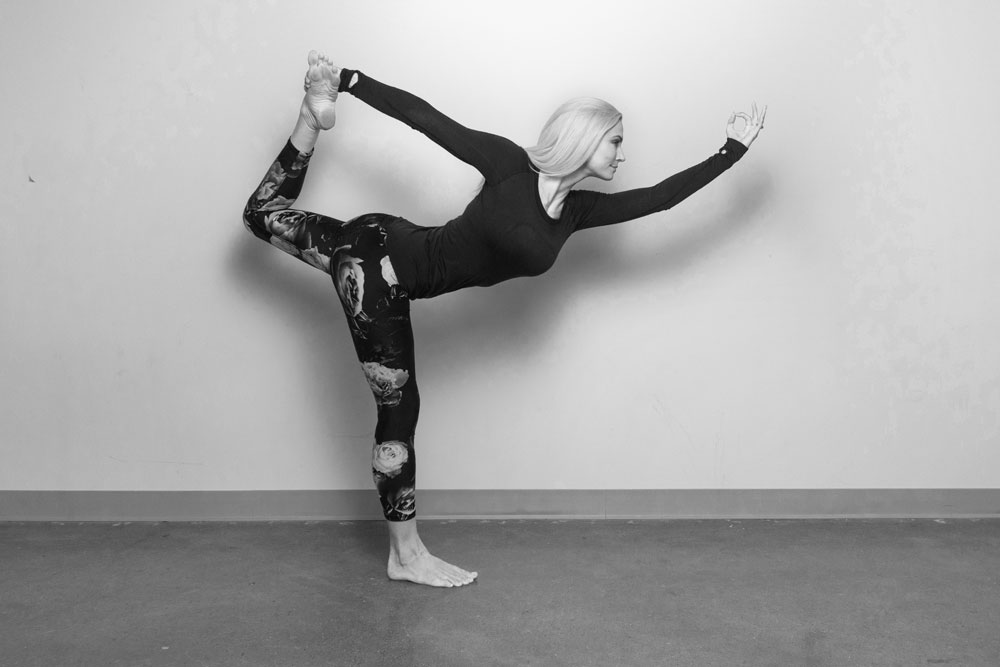
Parivrtta Natarajasana (Revolved Dancer Pose)
If you liked using a strap in Tiger Pose, you’ll want to utilize it here as well. Balance on your right leg and let your right shoulder open as your right hand fishes for a bind with your left leg. Most of us are used to traditional Dancer Pose, so be mindful to capture the opposite foot instead! Only kick into this back bend as far as your knees and back allow. Hold for five breaths each side.
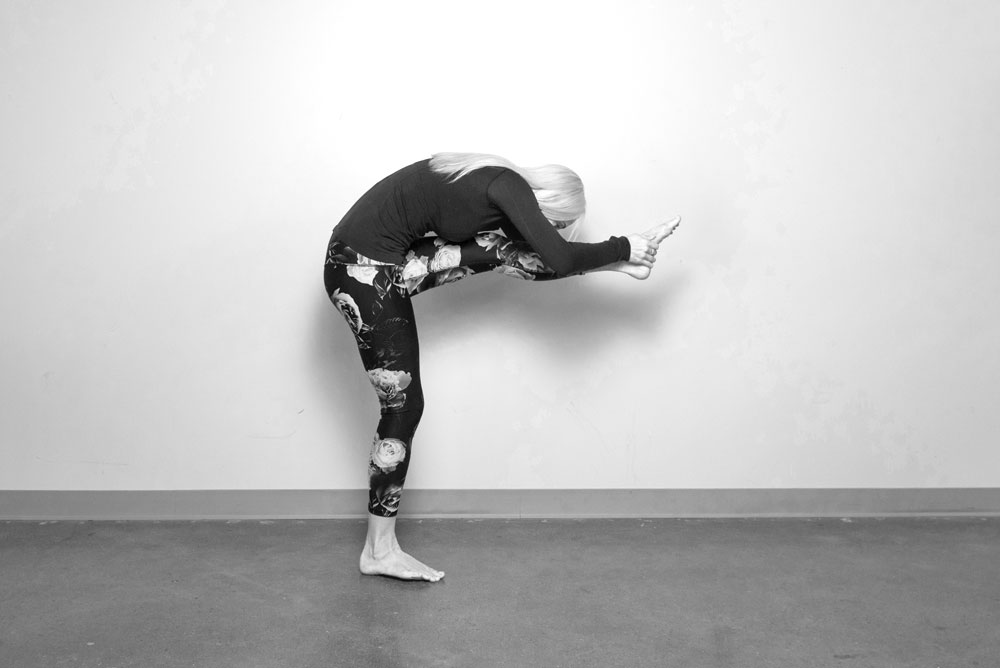
Dandayamana Janushirasana (Standing Head to Knee Pose)
To counter our back bends, we’ll bind forward in this standing balance. Both hands find a hold around your left foot or ankle. Arch through your back and straighten your left leg only as far as you need to find a stretch through your lower back. To intensify, deepen your left hip crease, pushing your hip toward the wall behind you. Your nose will hover above or touch your leg for five breaths on each side.
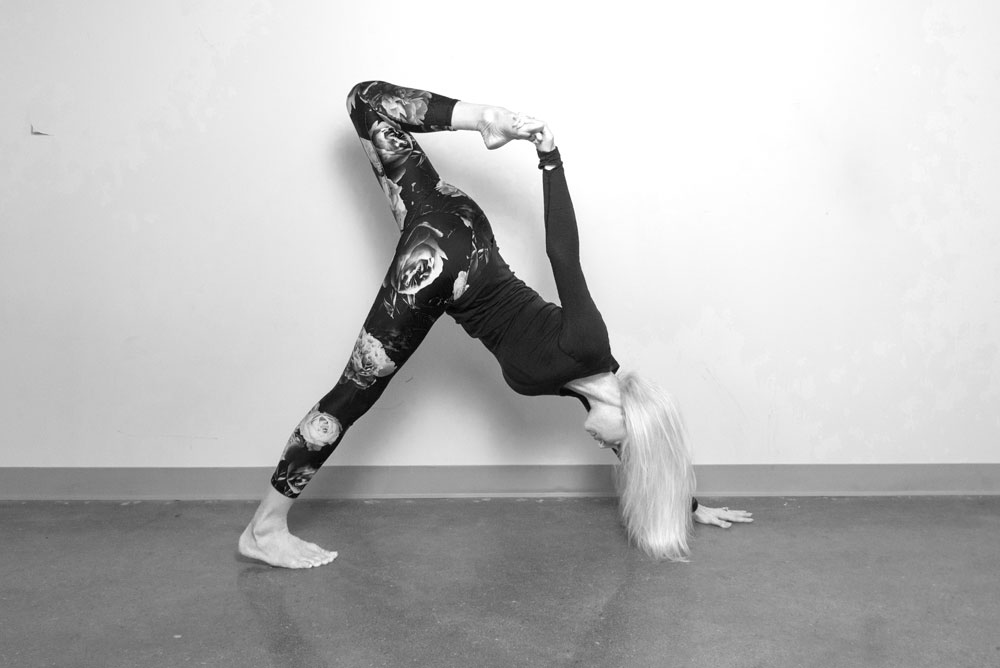
Bhadda Adho Mukha Svasana (Bound Down Dog)
This is a challenging pose with plenty of balance and flexibility work! Begin in Down Dog with your feet a little closer together than usual. Lift your left leg high and bend your knee. Now lift your right hand and get your balance. Patiently fish for your left ankle with your right hand. Many yogis will never find the ankle bind, but even without, there are plenty of benefits to breathing in this pose. Have a little fun with it for five breaths, then take it on the opposite side.
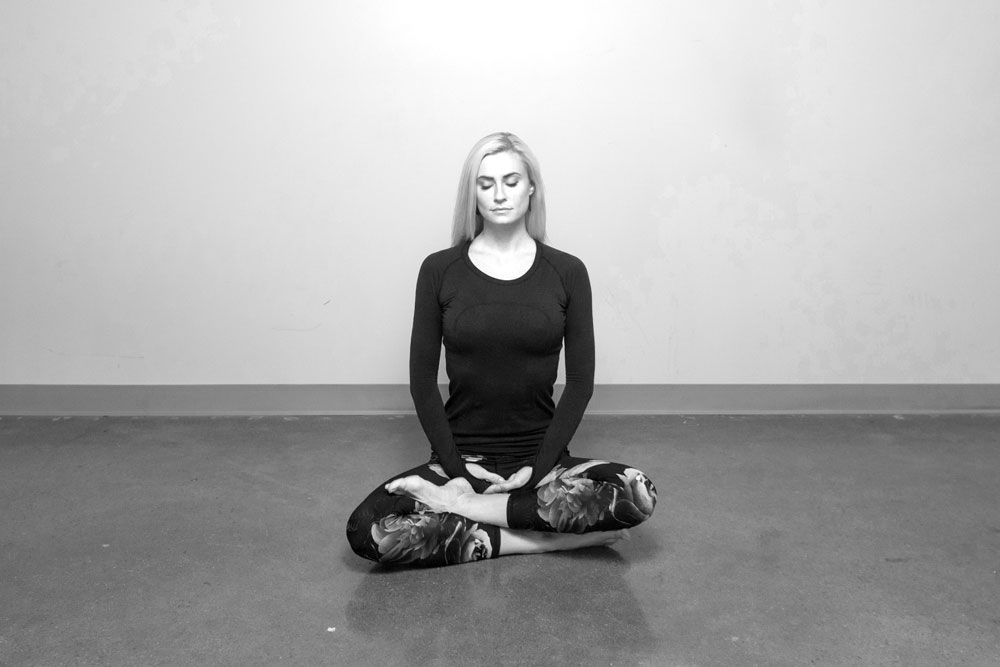
Dhyana (Seated meditation)
Find an even, rooted seat with an intentionally stacked spine, chin pulled back slightly. Without controlling your breath, simply watch it from the inside out. Train your attention here for five to 10 minutes for a mental calm that will last all day. Thoughts will creep in, but we gently guide our awareness back to the breath each time. As you seal in your practice, finish with three long oms. Let the auditory stimulation perk your right brain before you dive into the rest of your day. Namaste!
Linsey Birusingh, RYT 500 YACEP, was called to teach yoga after it helped anchor her anxiety and heal her body. Beyond yoga, she is a philanthropist with a background in journalism, TV and print. She currently teaches trauma-sensitive yoga workshops around the U.S., and coaches a 200-hour yoga program. You can connect with her on Instagram @yogini_linsey or at yogathrill.com. This article was originally published in YogaIowa magazine in October 2018.


